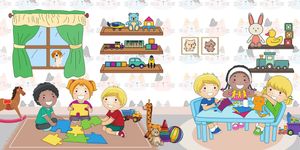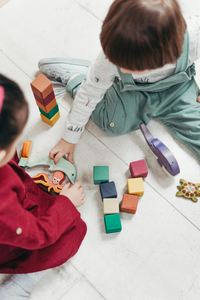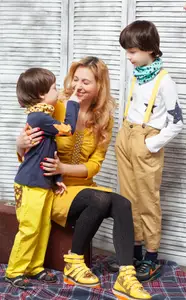Independent Toddler Activities: 10 Engaging Solo Play Ideas

Toddlers are curious explorers, always eager to discover the world around them. Encouraging independent play not only fosters their creativity but also allows parents a much-needed break. Independent toddler activities promote cognitive development, problem-solving skills, and self-reliance while keeping little ones engaged and entertained.
Independent play for toddlers can include a variety of simple yet stimulating activities. From playing with cars on a rug to using design and drill pattern toys, these activities captivate young minds and encourage focused attention. Parents can set up busy bins filled with dry pasta and hidden objects to spark curiosity and keep toddlers occupied.
By providing a mix of indoor and outdoor activities, parents can cater to different interests and energy levels. Outdoor options like water play, swinging, or making “mud pies” offer exciting sensory experiences. Meanwhile, indoor activities such as building blocks or drawing can enhance fine motor skills and imagination. With a variety of engaging options, toddlers can develop independence while having fun.
The Importance of Independent Play
Independent play fosters crucial developmental skills in toddlers. It nurtures self-reliance, enhances problem-solving abilities, and refines fine motor skills through engaging activities.
Cultivating Self-Reliance
Independent play empowers toddlers to make decisions and explore their environment without constant adult intervention. This autonomy builds confidence and self-esteem.
Toddlers learn to entertain themselves, developing internal resources for coping with boredom or frustration. They discover personal interests and preferences through self-directed play.
Independent activities like building blocks or sorting toys encourage toddlers to rely on their own judgment and creativity. This self-reliance extends beyond playtime, positively impacting other areas of their lives.
Enhancing Problem-Solving Skills
When toddlers play alone, they encounter challenges and devise solutions independently. This process is crucial for cognitive development.
Puzzles, especially floor puzzles, are excellent tools for promoting problem-solving skills. Toddlers must figure out how pieces fit together, developing spatial awareness and logical thinking.
Open-ended toys like building blocks or stacking cups present opportunities for creative problem-solving. Toddlers learn to experiment with different approaches, fostering flexibility in thinking.
These problem-solving experiences during independent play translate to improved decision-making abilities in daily life.
Developing Fine Motor Skills
Independent play offers numerous opportunities for toddlers to refine their fine motor skills. These skills are essential for future tasks like writing, buttoning clothes, and using utensils.
Activities involving crayons, markers, and stickers help toddlers practice hand-eye coordination and grip strength. Drawing and coloring exercises enhance precision and control.
Manipulative toys such as shape sorters or threading beads encourage dexterity and finger strength. These activities require focused attention and repeated practice, leading to improved fine motor control.
Regular engagement in these independent activities supports the development of crucial physical skills needed for academic and daily life tasks.
Sensory Play and Exploration
Sensory play engages toddlers’ senses and promotes independent exploration. These activities foster cognitive development and fine motor skills while providing endless entertainment.
Creating Engaging Sensory Bins
Sensory bins offer a tactile experience that captivates toddlers. Fill a shallow container with materials like rice, beans, or sand. Add small toys, scoops, and cups to encourage independent play for toddlers. Theme the bin around interests such as dinosaurs or vehicles to maintain engagement.
Rotate contents regularly to keep the activity fresh. Safe objects like pinecones, smooth stones, or fabric scraps introduce varied textures. Incorporate scents with items like cinnamon sticks or lavender for olfactory stimulation.
Sensory bins develop fine motor skills through scooping, pouring, and object manipulation. They also foster imaginative play as toddlers create scenarios with the materials.
Water Play Fundamentals
Water play provides a soothing sensory experience for toddlers. Set up a shallow basin with warm water and add cups, funnels, and sponges. Introduce concepts like floating and sinking with various objects.
Colored ice cubes or water beads offer visual stimulation. Bubbles add an exciting element to water play. Use whisks or straws to create foam, teaching cause and effect.
Supervise closely to ensure safety. Provide towels nearby for easy cleanup. Water play improves hand-eye coordination and teaches basic scientific principles through hands-on exploration.
Imaginative and Creative Activities
Engaging toddlers in imaginative and creative activities nurtures their cognitive development and self-expression skills. These activities provide opportunities for exploration, problem-solving, and emotional growth.
Fostering Imagination with Pretend Play
Imaginative play is crucial for toddler development. A play kitchen encourages role-playing and mimicking real-life scenarios. Choose a compact version to fit in small spaces.
Toy cars promote storytelling and spatial awareness. Toddlers can create roads, parking lots, and exciting adventures for their vehicles.
Magnetic tiles offer endless possibilities for constructing buildings, vehicles, and abstract shapes. These toys enhance problem-solving skills and spatial reasoning.
Dress-up clothes and props inspire toddlers to take on different roles and explore various scenarios. Include items like hats, capes, and toy tools to spark creativity.
Arts and Crafts Essentials
Art supplies are vital for creative expression. Provide toddler-friendly crayons and markers for drawing and coloring. Opt for chunky, easy-to-grip options to improve fine motor skills.
Stickers are excellent for developing hand-eye coordination. Offer a variety of shapes, colors, and themes to keep toddlers engaged.
Set up an art station with washable paints, brushes, and large paper sheets. This encourages free expression and sensory exploration.
Playdough or modeling clay allows toddlers to sculpt and mold, enhancing tactile skills and creativity. Provide safe tools like plastic rolling pins and cookie cutters for added fun.
Physical and Outdoor Activities
Physical and outdoor activities are essential for toddlers’ development. These activities promote gross motor skills, coordination, and sensory exploration while providing opportunities for fun and learning.
Encouraging Movement with Simple Toys
Outdoor toddler activities can be easily facilitated with simple toys. Bubbles are an excellent choice, encouraging toddlers to run, jump, and reach as they chase and pop them. This activity enhances hand-eye coordination and spatial awareness.
Water play is another engaging option. Fill a shallow basin with water and provide cups, spoons, and small toys. This activity improves fine motor skills and introduces basic concepts of volume and pouring.
Toy cars can be used to create simple obstacle courses. Arrange household items as barriers and guide toddlers to navigate their cars around them. This activity promotes problem-solving and spatial reasoning.
For more structured movement, consider setting up a mini golf course in the backyard. Use plastic cups as holes and provide lightweight plastic clubs. This activity enhances hand-eye coordination and introduces basic concepts of aim and force.
Bear crawl challenges are an excellent way to encourage full-body movement. Demonstrate the bear crawl position and create a short course for toddlers to navigate. This activity strengthens core muscles and improves balance.
Quiet Time Activities
Quiet time activities provide toddlers with opportunities for independent play and learning. These activities help develop focus, creativity, and problem-solving skills while giving parents a much-needed break.
Establishing a Reading Nook
Creating a cozy reading nook encourages toddlers to enjoy books independently. Choose a quiet corner of the room and furnish it with soft cushions or a small bean bag chair. Add a low bookshelf or basket filled with age-appropriate board books and picture books.
Quiet time bins can be incorporated into the reading nook. These bins contain various activities that toddlers can explore on their own, such as puzzles, coloring books, or soft toys.
Rotate the books and activities regularly to maintain interest. Include books with interactive elements like flaps or textures to engage young readers. Consider adding a small lamp for a warm, inviting atmosphere.
Encourage daily reading time in the nook to establish a routine. This habit fosters a love for books and supports early literacy skills. Parents can model quiet reading behavior by sitting nearby with their own book.
Setting Up for Success
Creating an environment that encourages independent play is crucial. The right space and activities can foster autonomy and engagement in toddlers.
Creating an Inviting Activity Space
Designate a specific area in your home for independent play. This space should be safe, comfortable, and easily accessible to your toddler. Use child-sized furniture and low shelves to display toys and materials.
Ensure the area is well-lit and free from potential hazards. Consider using soft flooring like foam tiles or a plush rug for comfort during floor play.
Organize toys and materials in clear, labeled containers. This promotes independence as toddlers can easily see and choose what they want to play with.
Rotate toys regularly to maintain interest and prevent boredom. Keep the space clutter-free to avoid overwhelming your child.
Choosing Appropriate Activities
Select activities that match your toddler’s interests and developmental stage. Busy bins filled with sensory materials like dry pasta or rice can provide engaging tactile experiences.
Opt for open-ended toys that encourage creativity and problem-solving. Building blocks, puzzles, and stacking cups are excellent choices for developing fine motor skills.
Include activities that support various developmental areas:
- Cognitive: Shape sorters, simple matching games
- Physical: Soft balls, push-and-pull toys
- Creative: Crayons and paper, Play-Doh
- Sensory: Textured books, sensory bins with various materials
Gradually introduce new activities to maintain interest and challenge. Observe your child’s preferences and adjust the selection accordingly.



